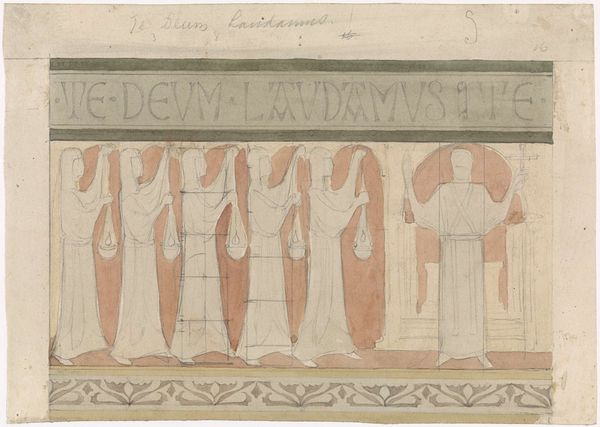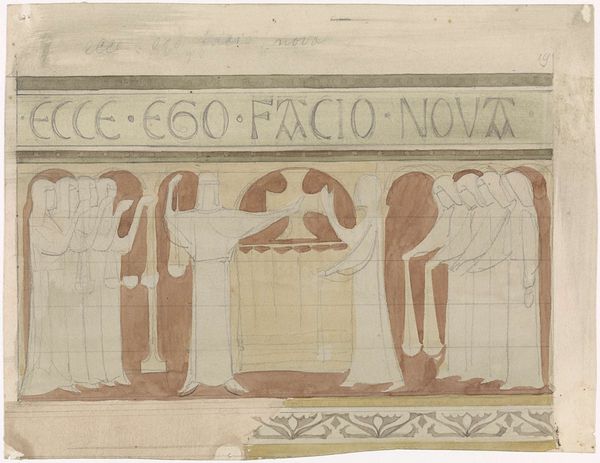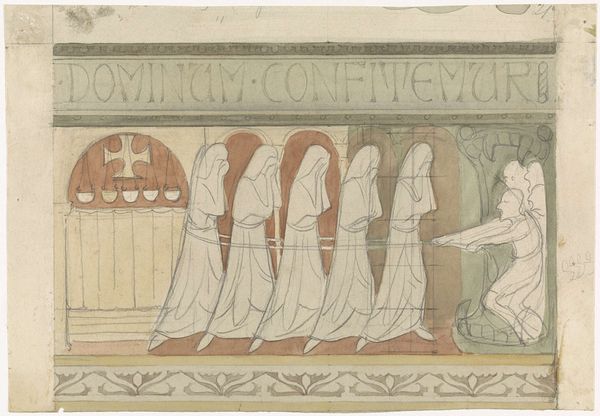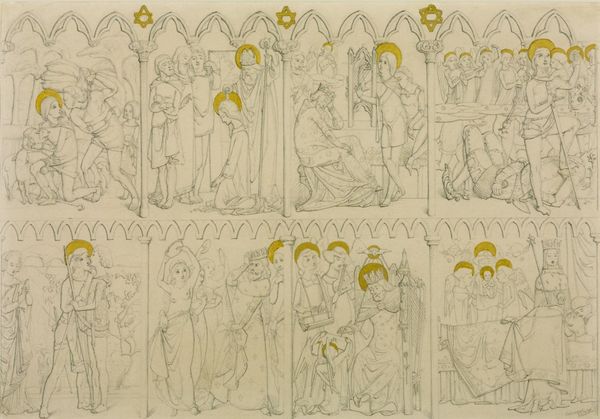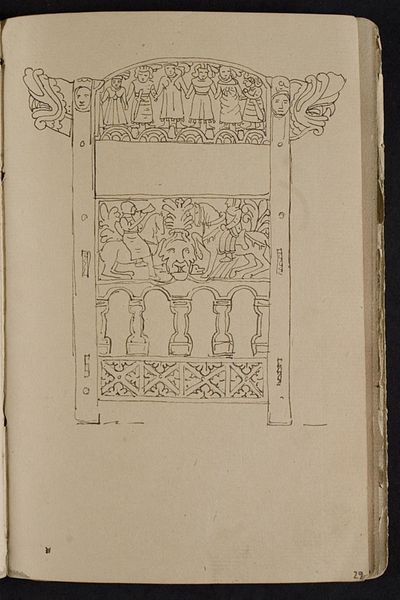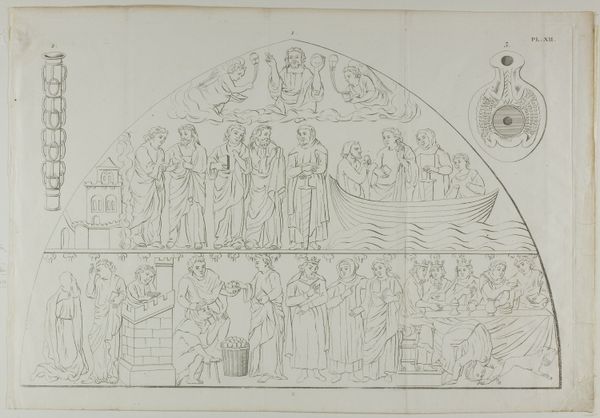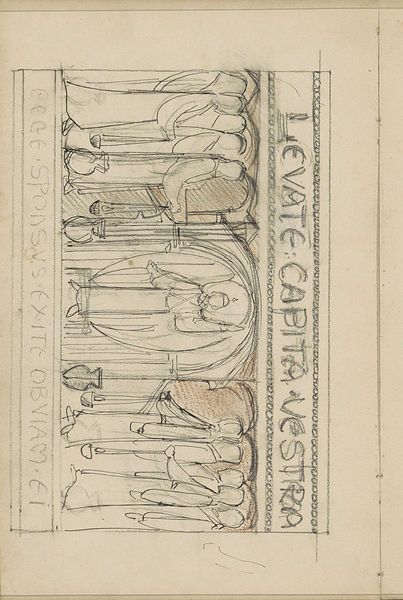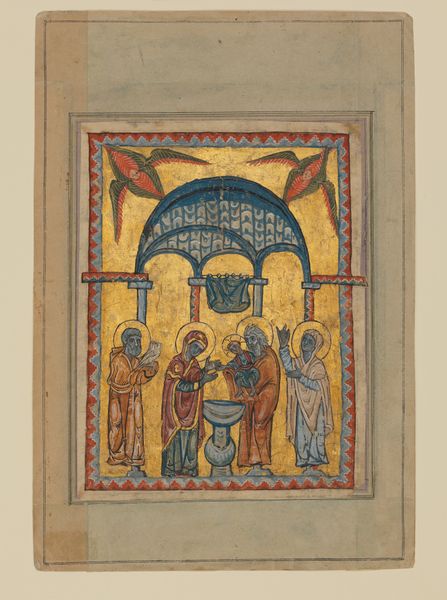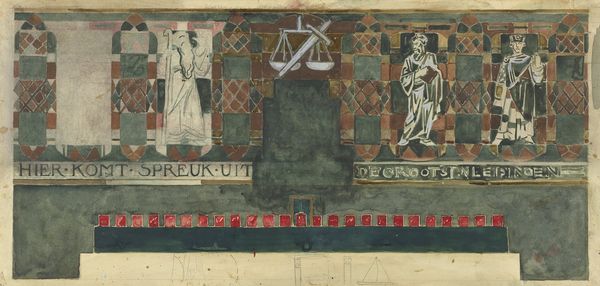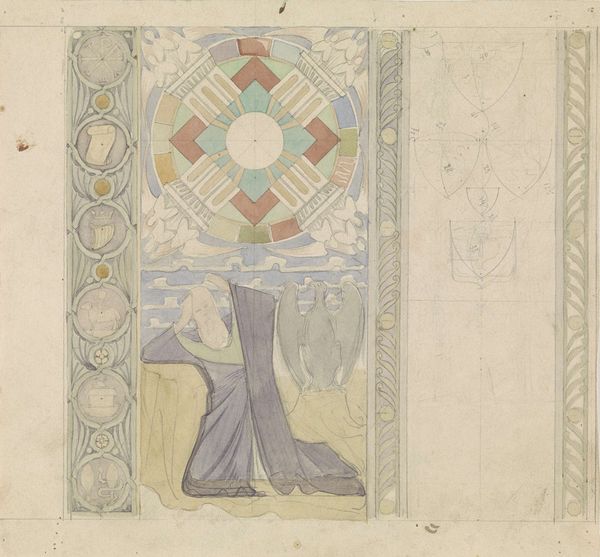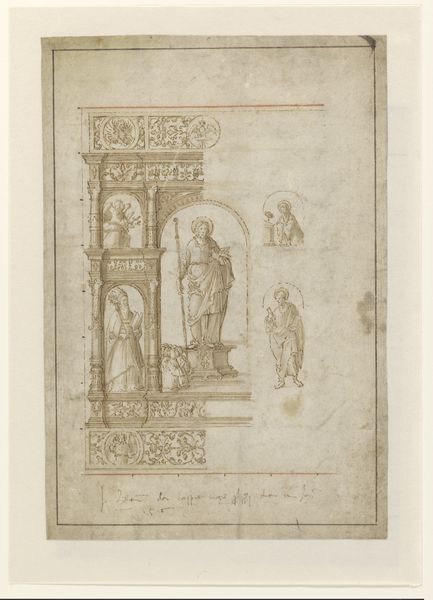
drawing, watercolor
#
drawing
#
medieval
#
water colours
#
narrative-art
#
figuration
#
watercolor
#
watercolour illustration
#
academic-art
Dimensions: height 173 mm, width 240 mm
Copyright: Rijks Museum: Open Domain
Curator: Antoon Derkinderen's watercolor drawing, "The Five Foolish Virgins Asking for Oil," presents an interpretation of a biblical parable. It seems to be inspired by medieval art, yet created between 1869 and 1925. Editor: My first thought is of a muted fresco, something pale and fragile, the color almost bleached out by time. The figures look like ghosts, their faces obscured, emphasizing the weight of their choice and what it symbolizes. Curator: Derkinderen studied at the Royal Academy of Fine Arts in Antwerp and the National Academy of Fine Arts in Amsterdam. He later became a professor himself and this explains his adherence to Academic artistic conventions but he still incorporated his vision for a modern aesthetic into history and symbolical paintings, creating something pretty unique. He would later explore his creative and critical ideas in several essays and critiques of established aesthetic ideas. Editor: Absolutely. Considering the sociopolitical context, with rising industrialization, one can almost interpret the maidens' quest for oil as a desperate need for resources. Their lack of preparation becomes a stark commentary on resource management. And beyond the traditional religious interpretations, I am immediately curious about the position of women, condemned by lack of access to what keeps the machine going. Curator: You've highlighted the fascinating potential for intersectional readings within it. The figures' positioning does seem rather significant. The architectural background and the overall composition reflect Derkinderen's interests in monumental art for public spaces and the way it creates a system of symbols. He had his thoughts very much centered around moral and social reform as reflected in works destined to reach wide audiences. Editor: And thinking of its visual language, the drawing doesn’t deliver the emotional punch you’d expect from such a critical moment. The muted palette and simplified forms serve more as emblems, less like real characters undergoing turmoil. This distances the viewer, inviting reflection rather than just simple empathy, pushing one towards an almost philosophical response to human destiny, a gendered destiny. Curator: This deliberate coolness, even austerity, is key to understanding the role he imagined for art— as a tool for ethical and social instruction. Editor: And I’d say, Derkinderen delivers that instruction while cleverly holding space for much wider social dialogues on power and access.
Comments
No comments
Be the first to comment and join the conversation on the ultimate creative platform.
